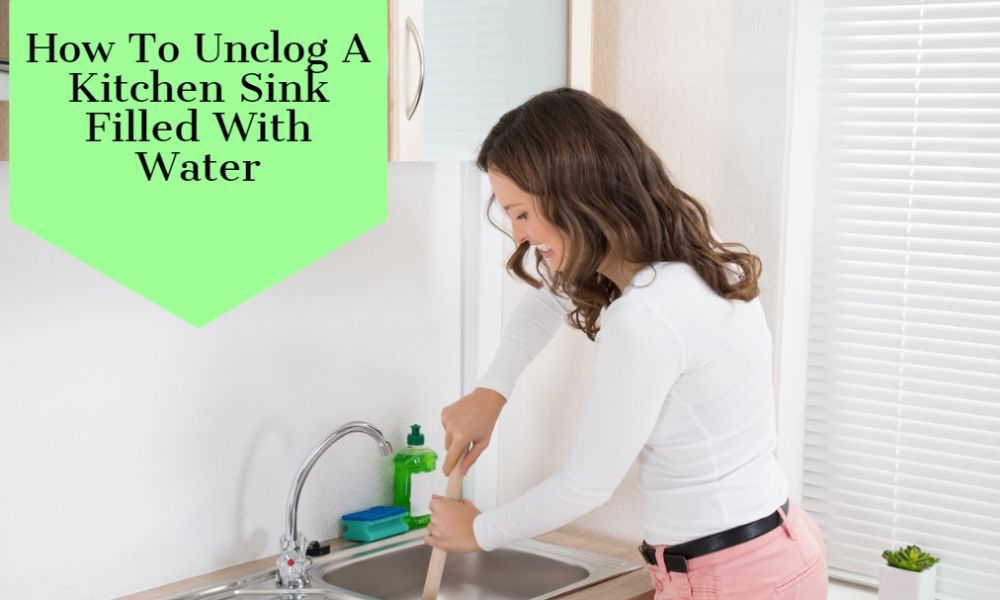A clogged kitchen sink is an inevitable problem that every homeowner will encounter at some point. It can be frustrating to deal with, especially when the sink is filled with water and won’t drain properly. Not only does it affect your daily routine, but it can also lead to unpleasant odors and even damage to your plumbing system if left untreated. Fortunately, there are several ways to unclog a kitchen sink filled with water without calling in a professional plumber.
In this article, we will discuss some effective methods that you can try at home using common household items. Whether you have a double or single bowl sink, these tips will help you get the job done quickly and efficiently so you can go back to using your sink as usual.
Common Causes Of A Clogged Kitchen Sink
Kitchen sinks can become clogged for a variety of reasons, largely due to what goes down the drain. Some of the most common causes include:
Food Debris: The number one culprit of a clogged kitchen sink is food waste. Even with a garbage disposal, certain types of food debris like coffee grounds, eggshells, and pasta can cause blockages over time.
Grease and Fats: Grease, fats, and oils can solidify once they cool down and stick to the pipes, causing blockages. This build-up restricts the water flow and leads to a clogged sink.
Soap Residue: Over time, dish soap can leave a residue that builds up and narrows the pipe’s diameter. This build-up restricts water flow, causing a sink to become blocked.
Foreign Objects: Items that shouldn’t be in the sink can also cause blockages. This includes items like utensils, small toys, or other non-food items that might accidentally fall into the sinks.
Mineral Build-Up: In areas with hard water, minerals dissolved in the water can precipitate out and accumulate on the inner walls of the pipes, gradually blocking them.
Inadequate Venting: Plumbing systems need proper venting to allow water to flow smoothly. If the venting is inadequate, it could lead to slow drainage and eventually a clog.
What You’ll Need
To unclog your kitchen sink, you’ll need some basic tools and materials. Depending on the method you choose, here’s what you might need:
- Plunger
- Plumber’s Snake or Hand Auger
- Wire Coat Hanger
- Bucket or Bowl
- Wrench
- Gloves
- Towels or Rags
- Baking Soda and Vinegar
- Hot Water
Taking Safety Precautions
Taking safety precautions is a vital part of any home maintenance task, and unclogging your kitchen sink is no exception. Here are some guidelines to ensure you stay safe while dealing with a clogged sink:
Wear Gloves: Always wear rubber gloves to protect your hands from any potential bacteria or harsh chemicals.
Protect Your Eyes: If you’re using a chemical drain cleaner, consider wearing safety goggles to protect your eyes from splashes.
Ventilate the Area: If you’re using any chemical cleaners, ensure the area is well ventilated to avoid inhaling harmful fumes.
Use Tools Safely: Be careful when using tools like a plumber’s snake or wrench to avoid accidental injury.
Follow Instructions: If you’re using a commercial drain cleaner, read and follow all instructions and safety warnings on the packaging.
Proper Disposal: Dispose of any used materials or residues safely according to your local regulations.
Know When to Call a Professional: If the clog is stubborn, don’t force it as you could potentially damage your pipes. It’s better to call a professional plumber if you’re unsure or if the methods you’ve tried aren’t working.
Step-By-Step Procedure
1. Using A Bucket Or Container Remove Standing Water
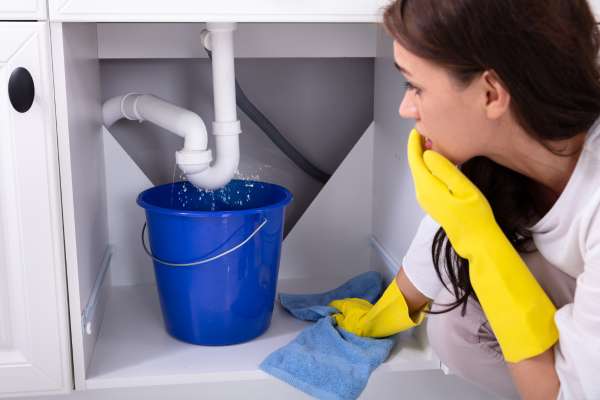
Before you begin the process of unclogging, it’s crucial to get rid of any standing water in the sinks. Using a bucket or a large cup, scoop out as much water as you can from the sink. This makes it easier to access the drain and handle the clog directly.
2. Using A Wet/Dry Vacuum Remove Standing Water

If you have a large amount of water or want a more effective method of removing standing water, use a wet/dry vacuum. Ensure the vacuum is set for handling liquids. Turn it on and suck up the remaining water in the sinks. This will provide you with a clear working area.
3. Identify The Clog
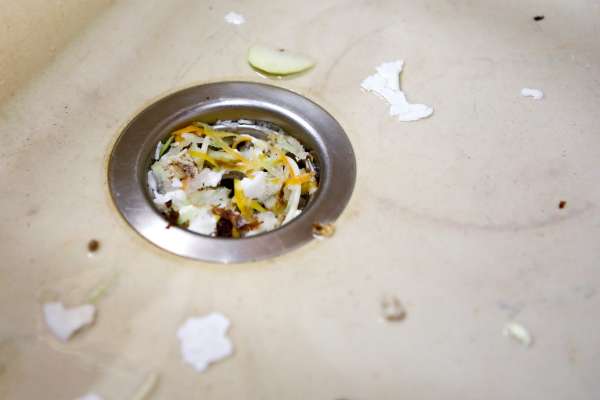
Next, try to identify where the clog is. If water backs up immediately when you run the tap, the clog is probably near the top of the drainpipe. If it takes a while for the water to back up, the clog is likely deeper in the pipes.
4. Use A Plunger
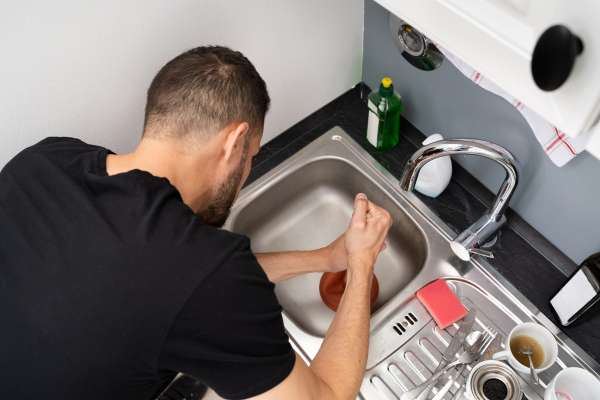
After you’ve identified the clog and removed standing water, it’s time to use a plunger. If you have a double kitchen sink, ensure you block the other side with a wet cloth or a stopper before you begin. This helps direct the force of the plunger to the clog.
5. Try A Natural Solution
If the plunger doesn’t work, you might want to try a natural solution before resorting to more invasive methods. For example, salt and boiling water can be effective in breaking up certain types of clogs. Pour half a cup of salt into the drain, followed by boiling water. Allow it to sit for a few minutes and then flush the drain with hot water to clear it.
6. Use Baking Soda And Vinegar Mixture
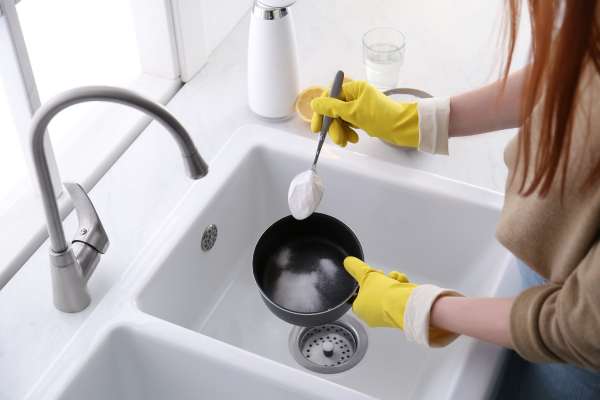
If the salt and boiling water method doesn’t work, you can try using a mixture of baking soda and vinegar, which can create a chemical reaction that helps to dissolve the clog. Pour half a cup of baking soda into the drain, followed by half a cup of vinegar. Cover the drain and allow the mixture to work for about 15-30 minutes.
7. Flushing With Hot Water
After allowing the baking soda and vinegar mixture to sit, follow it up by flushing the drain with boiling water. The hot water helps to wash away the clog and any remaining baking soda or vinegar.
8. Use A Plumbing Snake Or Auger
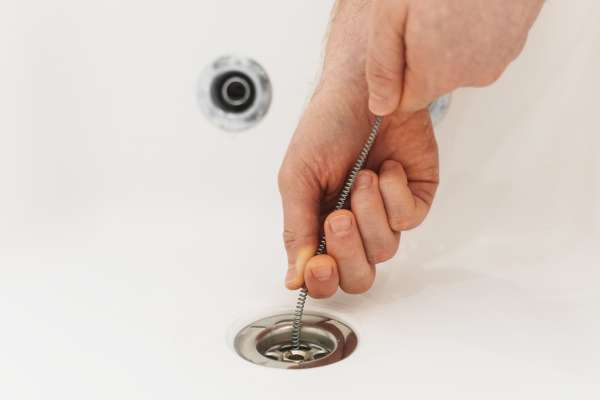
If the natural solutions don’t work, you may need to resort to a plumbing snake or hand auger. Push the end of the snake into the drain and turn the handle to extend it further into the pipe. When you feel resistance, you’ve reached the clog. Turn the snake to break up the clog and then pull it out.
9. Chemical Drain Cleaners (As A Last Resort)
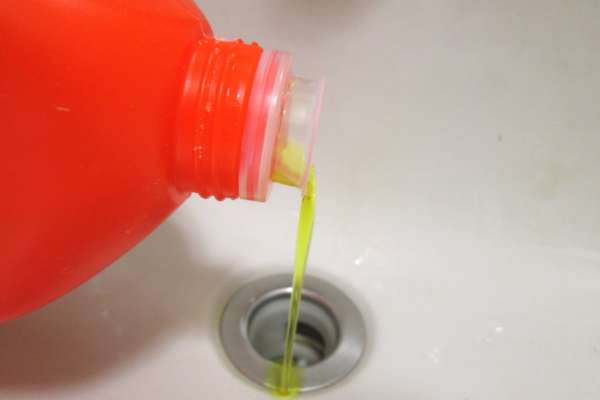
If all else fails, you may need to use a chemical drain cleaner. However, this should really be a last resort, as these chemicals can be harmful to both your pipes and the environment. Always follow the instructions on the packaging, and remember to use gloves and eye protection to avoid any accidental splashes.
The Benefit Of Unclogging A Kitchen Sink Filled With Water
There are several benefits associated with unclogging a kitchen sink filled with water, which include:
Maintaining Hygiene: A clogged sink can often lead to the build-up of food particles and debris, which can become a breeding ground for bacteria and germs, leading to unpleasant smells. Unclogging the sinks helps maintain a clean and healthy kitchen environment.
Preventing Water Damage: A severely clogged sink could potentially overflow, leading to water damage in your kitchen. By addressing the problem promptly, you prevent potential costly repairs and replacements associated with water damage.
Preserving Plumbing Health: Regularly unclogging your sink helps maintain the overall health of your plumbing system. Persistent blockages can lead to undue pressure on your pipes, potentially causing leaks or even pipe bursts in severe cases.
Improving Efficiency: A clogged sink can seriously hamper your kitchen activities. Washing dishes, cooking, and other tasks become inconvenient with a sink that won’t drain. Unclogging it allows you to get back to your routine quickly and efficiently.
Cost Saving: Regular maintenance, including unclogging your sink when necessary, can help you avoid more significant, more expensive plumbing issues down the line.
Environmental Responsibility: Often, the techniques used to unclog a sink are more environmentally friendly than the alternative using harsh chemical drain cleaners. Using mechanical methods or natural cleaners helps keep harmful substances out of our water systems.
Choosing A Suitable Drain Cleaner
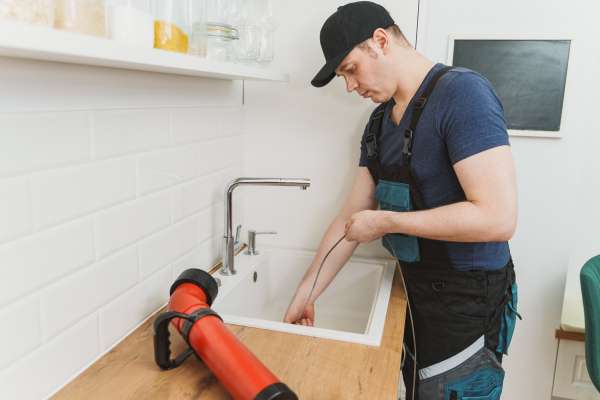
Choosing a suitable drain cleaner for your kitchen sink requires careful consideration to protect your pipes, your health, and the environment. The ideal drain cleaner should be effective in dissolving clogs without damaging your plumbing system. While chemical drain cleaners can be powerful, they can also be corrosive and harmful to both your pipes and the environment. As an alternative, consider using enzyme-based drain cleaners.
These use bacteria or enzymes to break down the clog and are generally safer for your pipes and for the environment. Always remember, the best drain cleaner is prevention proper disposal of waste and regular maintenance can keep your pipes clear without the need for harsh chemicals. However, for stubborn clogs that resist all your efforts, it may be best to call in a professional plumber to avoid damaging your plumbing system.
How To Prevent Future Clogs
preventing future clogs is key to maintaining a smooth-running kitchen sink. Here are some preventive steps:
1. Regular Maintenance And Cleaning
Routine maintenance and cleaning of your sink and drains can go a long way towards preventing future clogs. A simple yet effective method is to regularly flush your sink with boiling water, which can help to break down and remove any potential blockages before they become a problem.
2. Proper Waste Disposal
Be mindful of what you put down your drain. Avoid throwing food scraps, coffee grounds, egg shells, and other solid waste into the sink. Instead, dispose of them in your compost bin or trash can.
3. Avoiding Pouring Grease And Oil Down The Sink
Grease, oils, and fats should never go down your drain. They can solidify and stick to the pipes, causing blockages. Instead, let them cool and solidify, and then dispose of them in the trash.
4. Using Drain Screens Or Stoppers
A drain screen or stopper can prevent larger pieces of debris from entering your drain and causing a blockage. They are especially useful in the kitchen sink where food debris is common.
5. Check The Garbage Disposal
Make sure your garbage disposal is functioning properly, as this can also prevent clogs. Always run water while the disposal is on to help flush the waste through the drain. Also, be mindful not to overload your garbage disposal with too much waste at once.
The Final Thoughts
Unclog a kitchen sink filled with water is not as difficult as it may seem. With the right tools and techniques, anyone can get their sink back to its normal state in no time. Remember to always take preventative measures such as avoiding pouring grease down the drain and using a strainer to catch food particles. If you find yourself struggling to unclog your sink, don’t hesitate to call a professional plumber for assistance. By following these tips, you can keep your kitchen sink running smoothly and avoid the frustration of dealing with clogs in the future. So go ahead and give it a try today!
